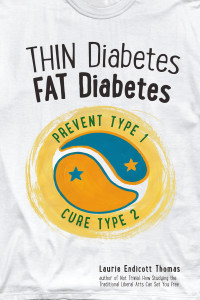Medically Supervised Water – Only Fasting
The following italicized text is a description of water-only fasting from a report entitled “Clinical Fasting” written by Toshia Myers, PhD and Alan Goldhamer, DC. (Dr. Myers is research director at True North Health Foundation in Santa Rosa, California. Dr. Goldhamer directs the True North Health Center, also in Santa Rosa.):
Water-only fasting (complete abstinence from all foods and beverages except for pure water) is now used therapeutically to initiate physiological responses that may promote self-healing. Animals, including humans, are capable of varying degrees of cellular regeneration, which may be supported by fasting as well as a natural diet and adequate rest.
Several other claims have been made about physiological responses to fasting, including ketogenesis, hormone modulation, reduced oxidative stress and inflammation, increased stress resistance, lipolysis, and autophagy.
Water-only fasting results in the cessation of digestion and a gradual transition into a ketogenic state. During the 4–8 hours after caloric ingestion, available glucose, amino acids, and fatty acids in the blood stream are depleted. After approximately 24-48 hours, glycogen reserves in the liver are depleted, and there is a switch from glycogenolysis to gluconeogenesis and ketogenesis (a metabolic process that converts fatty acids released from adipose tissue into ketone bodies). A ketogenic state is reached after approximately 48 to 72 hours, depending on an individual’s glycogen reserves. Ketosis may spare glucose utilization and reduce protein catabolism during prolonged periods without food. Importantly, the human brain may be able to use ketone bodies as an alternate energy source.
In a fasted state, increased autophagy (breakdown and recycling of damaged and non-essential tissue) provides a source of amino acids, fatty acids, and minerals, and the energy previously used for digestion may be directed towards cellular regeneration. Physiological adaptations such as a decrease in inflammatory cytokine levels, may also be induced. The fasted state continues until nutrient reserves are depleted, at which point the body enters starvation (a state of chronic nutritional deficiency). Although most well-nourished humans can safely fast for up to 30 days or longer, fasts should always be terminated before nutrient reserves are depleted. Refeeding after a fast is a deliberate, gradual process in which caloric beverages and foods are introduced in increasing complexity to restart the digestive process.
Clinical evidence in humans suggests that fasting may improve hypertension, rheumatoid arthritis, cardiovascular disease, metabolic syndrome, osteoarthritis, fibromyalgia, chronic pain, chemotherapy side effects, and quality of life.
Stages of Fasting
The following information on the stages of fasting mostly comes from Dr. Edward Group:
Stage 1 – Days 1 – 2
Several things happen at the cellular level that cause hunger and fatigue during this first stage. When you’re eating regularly, your body breaks down glucose to get the energy it needs to function properly. While you’re fasting, your body needs to produce glucose for energy. Once glycogen stores are depleted, the body begins a process called gluconeogenesis. During gluconeogenesis, your liver converts non-carbohydrate materials like lactate, amino acids, and fats into glucose. As your body goes into “battery save mode,” your basal metabolic rate, or BMR, becomes more efficient and uses less energy. This power saving process includes lowering your heart rate and blood pressure. At this stage, you may feel drained. However, if you stick it out for a little longer, some of that lost energy will return.
Stage 2 – Days 3 – 7
When you consume a typical diet of carbohydrate rich foods, your body breaks down sugars and starches into glucose. Glucose is the primary source of energy for the body. However, when you fast or go into ketosis, glucose becomes limited, and your body must turn to fat stores for the energy it requires. Your body breaks fat down into glycerol and fatty acids. The liver synthesizes ketones using fatty acids. The glycerol is broken down by the liver for additional glucose, and finally, the ketones are used by your brain as glucose becomes less available. Your body is smart enough to begin to use ketones as its primary fuel source so it can slow down the breakdown of muscle and other tissues for glucose production.
Stage 3 Days 8 – 15
During stage three, your body starts to enter into a “healing mode.” This healing process begins as your digestive system takes a rest from the common stressors and toxins it endures on a daily basis. As a result, your body has fewer free radicals entering the mix, and oxidative stress decreases.
On the flip side, fasting causes a stress that provides an added benefit. This is a kind of mild stress that is comparable to the stress caused by exercise, which ultimately makes you stronger and your immune system more resilient.
Stage 4 Day 16 and Beyond
Stage four is the extension and completion of the healing and cleansing processes that began during the earlier stages. The longer you fast, the more time and opportunity your body has to heal and cleanse itself.
Stage 5 – Breaking The Fast
How you choose to end your fast is critical. Depending on how long you fast, you may need to ease your way back into eating solid food. Fruit juices, cooked vegetables, and broths can help acclimate your body and digestive system to eating as internal mechanisms come back online.
Contraindications to Water-Only Fasting
Fasting is not for everyone. It can be an intense and sometimes unpleasant experience before you get to the good part. There are some conditions that can make fasting inappropriate. For example, there are certain types of cancers that can make adjusting to the physiology parts of fasting difficult. There are also particular kinds of medications that may contraindicate fasting. No one should initiate a water-only fast without having his/her medical history reviewed by a qualified medical doctor who specializes in treatment through water-only fasting. Sometimes a comprehensive physical exam may be necessary before beginning a medically supervised fast. This exam may include blood work and other necessary testing.
My Thoughts
My thoughts on medically supervised water-only fasting are greatly influenced by Psychologist Doug Lisle. Dr. Lisle has years of experience working with fasting patients at the True North Health Center in Santa Rosa California.
During his podcasts on the beatyourgenes.org web site, he has frequently mentioned the remarkable health improvements he has witnessed during his time at True North. More importantly, he exudes extreme confidence in his conclusion that medically supervised water-only fasting is a monumentally underutilized medical therapy for a variety of medical conditions. His confidence is derived from the mountains of scientific evidence supporting the efficacy of water-only fasting as a medical treatment. A video that he recommends watching is “The Science of Fasting”.
Any physician who is convinced in the research supporting fasting can apply to True North for its Fasting Certification Program. This program is an intense, hands-on, learning experience for doctors serious about learning how to safely and effectively apply nutritional medicine, including fasting, in an integrative medical setting.
As you might imagine, the “nutritional medicine” that is taught involves the promotion of a diet high in whole plant foods.
In order to increase the likelihood of maintaining any health improvements provided by fasting, a patient must adopt a diet dominated by whole plant foods. That is why The True North Health Center provides nutrition and cooking classes for its patients.
I believe that medically supervised water-only fasting is a treatment option for chronic disease that most patients don’t even know about. It’s probably because most MDs don’t even know about it. If your interest in fasting has been piqued, I do not recommend undergoing any fast without first consulting a physician, preferably one who has some knowledge in water-only fasting.
Medically Supervised Water-Only Fasting Centers in the US
- True North Health Center in Santa Rosa, California
- Fasting Escape Retreat Center in Southern California
- Sedona Fasting Retreat Center in Sedona, Arizona
Fasting Without Fasting?
Is it possible to reach the fasting state without fasting?
Valter D. Longo is an Italian-American biogerontologist and cell biologist. He is currently a professor at the USC Davis School of Gerontology with a joint appointment in the department of Biological Sciences as well as serving as the director of the USC Longevity Institute. Dr. Longo is featured in the documentary “The Science of Fasting” beginning at 40:15 of the film.
Dr. Longo’s research showed that mice who fasted for 48 hours prior to receiving large doses of the chemotherapy drug temozolamide were able to tolerate the doses much better than mice who ate a normal diet. Dr. Longo was also involved in research that showed that fasting may enhance the response of glioma to chemotherapy and radiotherapy.
Dr. Longo believes he has developed a meal program that mimics fasting. The name of this program is Prolon. Prolon has been clinically shown to reduce biomarkers/risk factors for age-related diseases. It has shown enough promise that the University of Genova is recruiting for a phase II clinical trial involving Prolon. The trial will attempt to assess the feasibility, safety and effects on patient nutritional status of a 5-day fasting-mimicking diet (Prolon) in patients with different cancer types and concomitant anticancer treatment.
Right now I view Dr. Longo’s fasting mimicking diet with a healthy amount of skepticism, but I look forward to what the research will find.
Stay Healthy and Strong!






 E Excerpt from Laurie Endicott Thomas’s amazing book Thin Diabetes – Fat Diabetes by clicking here!
E Excerpt from Laurie Endicott Thomas’s amazing book Thin Diabetes – Fat Diabetes by clicking here!
Speak Your Mind